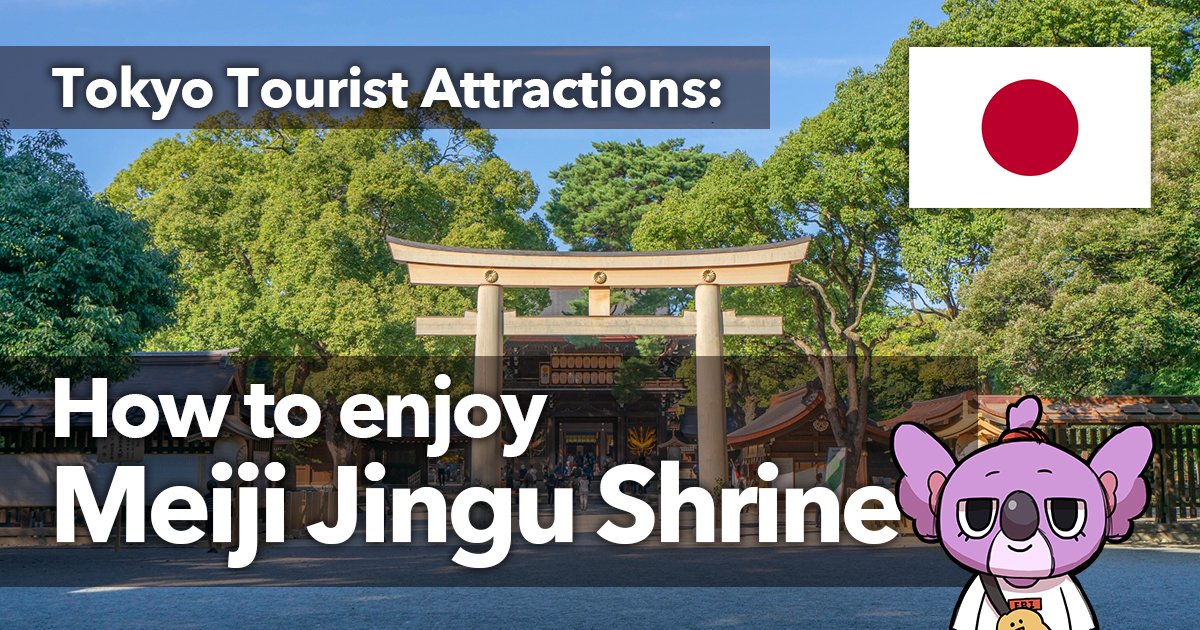Introduction
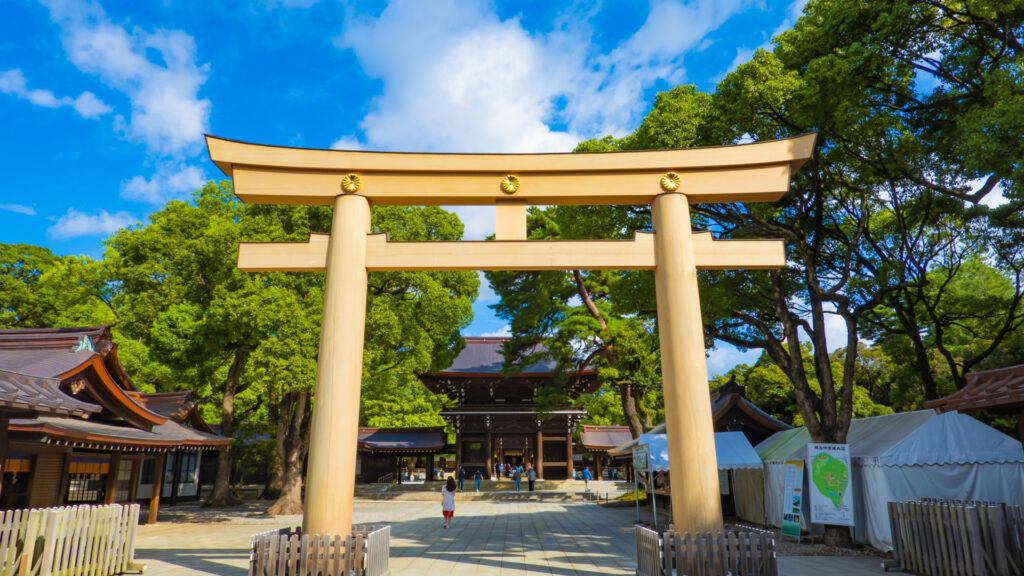
A sacred place of tranquility and beauty located in the heart of Tokyo, Meiji Jingu Shrine is a popular tourist destination that attracts many visitors throughout the year. founded in 1920, Meiji Jingu was built to honor Emperor Meiji and Empress Dowager Shoken. The shrine is surrounded by vast grounds and abundant nature, making it an oasis from the hustle and bustle of the city.
The main attraction of Meiji Shrine is its majestic atmosphere and beautiful forest. Walking along the approach to the shrine, you feel as if you have stepped into another world. As you proceed along the approach, you are greeted by a huge torii gate, beyond which is the solemn main shrine building. The place offers nature in all four seasons, and you can enjoy different scenery depending on the time of year you visit, such as cherry blossoms in spring and autumn leaves in fall.
Meiji Jingu is also a culturally important place. With a variety of festivals and events held throughout the year, there are great opportunities to experience traditional Japanese culture. In particular, ceremonies such as Hatsumode and wedding ceremonies are popular among many foreign tourists, as they allow visitors to experience Japanese traditions firsthand.
In addition, there are many other attractions within Meiji Jingu Shrine, such as the Treasure House and the Gyoen. This article provides detailed information on how to enjoy Meiji Jingu Shrine. We will provide you with useful information to help you plan your sightseeing and make your trip to Tokyo even more special.
History and Culture of the Sightseeing Spot
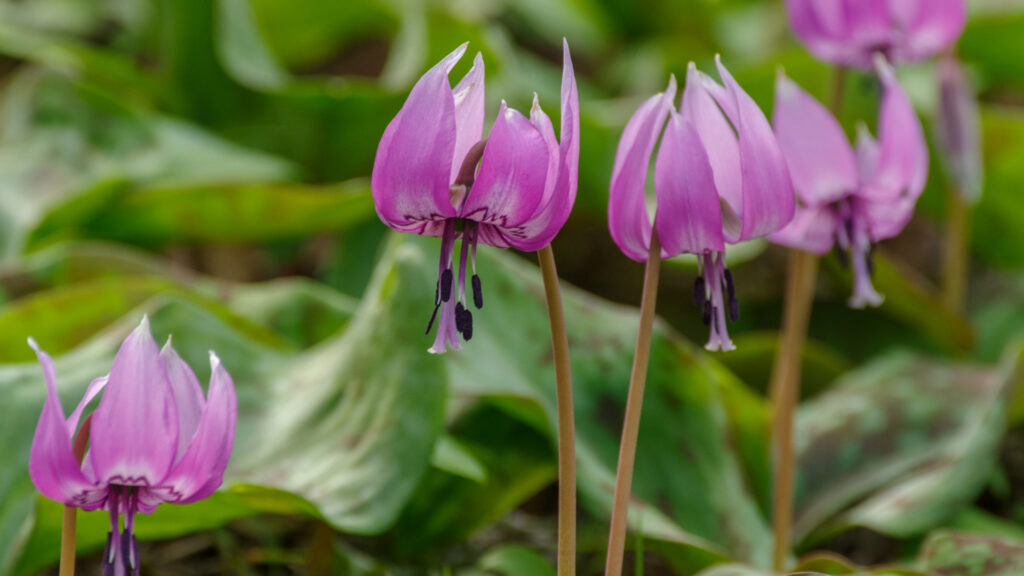
Meiji Jingu Shrine is very important in its history and culture; it was built in 1920 to honor Emperor Meiji and Empress Dowager Shoken. Emperor Meiji is the emperor who promoted the modernization of Japan and is considered the symbol of civilization and enlightenment. His reign was a time of great change in Japan through the Meiji Restoration. This Jingu was built to honor his achievements.
Historical Background
The construction of Meiji Shrine was made possible by donations from the public after the fall of Emperor Meiji in order to honor his great achievements forever. The grounds of the shrine were planted with approximately 100,000 trees collected from all over Japan to form an artificial forest. This forest covers the entire grounds of the shrine and provides beautiful scenery in each of the four seasons.
During the postwar reconstruction period, Meiji Jingu remained the object of worship for many people. Although damaged by the war, the shrine was rebuilt soon after the war and once again regained its majestic appearance.
Cultural Features
Meiji Jingu Shrine is famous as a place where visitors can experience traditional Japanese culture. Various festivals and ceremonies are held at the shrine throughout the year. For example, many people visit the shrine on New Year’s Day as Hatsumode to pray for peace and prosperity in the New Year. Hatsumode is an event held at shrines throughout Japan, but Meiji Jingu Shrine is especially known for the large number of visitors who come to pay their respects.
Wedding ceremonies are also frequently held at Meiji Shrine. The traditional Shinto wedding ceremony offers a taste of Japanese culture as the bride and groom walk down the approach to the shrine dressed in beautiful kimono.
The Meiji Jingu Shrine is home to the Treasure House, where visitors can view items related to Emperor Meiji and Japan’s historical heritage. In addition, the Gyoen Garden is filled with seasonal flowers, and the cherry blossoms in spring and the autumn leaves in fall are especially spectacular.
Thus, the historical background and rich culture of Meiji Jingu Shrine make it a place for deepening one’s understanding of Japanese traditions. By visiting, you will be able to experience the past and present Japanese culture and enjoy its charms along with the rich natural environment.
Places to visit
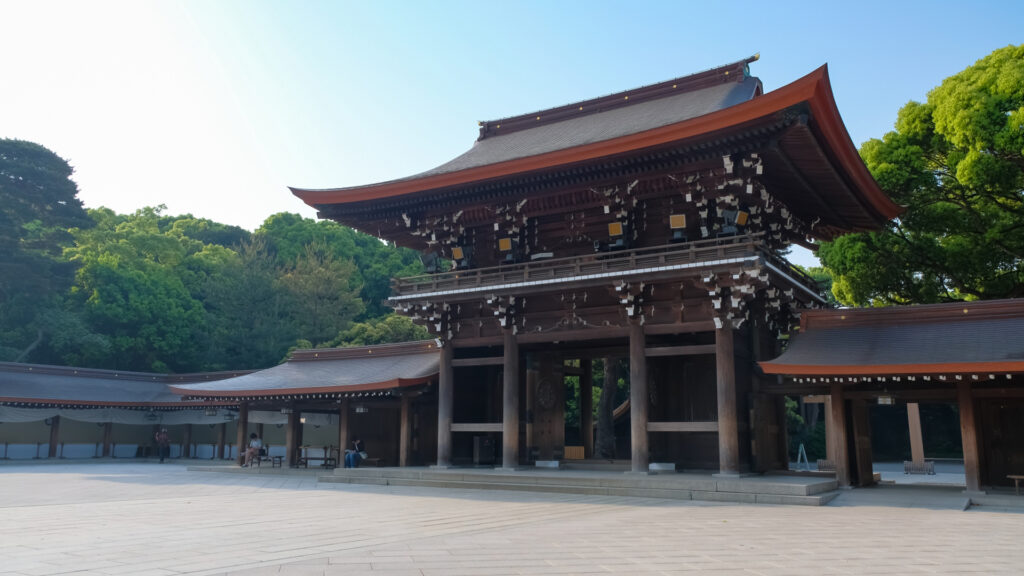
Meiji Jingu Shrine is a beautiful place with its rich nature and historical buildings. Here are some recommended times to visit, main attractions, and points to note when visiting.
Suggested times of year to visit
Meiji Jingu Shrine is worth visiting throughout the year, but the best times to visit are spring and fall. In spring (March to May), the grounds are decorated with beautiful cherry blossoms in full bloom. In autumn (September through November), the autumn leaves are magnificent, and the entire grounds are tinged with red and yellow. During these seasons, visitors can enjoy the natural beauty of Meiji Shrine to the fullest.
Major sights and popular tourist attractions
Honden.
- The main shrine, the center of Meiji Jingu, is surrounded by a solemn atmosphere. Here, visitors can watch worshippers quietly offer up their prayers.
Otorii.
- Upon entering the shrine grounds, the first thing you will see is the huge Otorii gate. This wooden torii gate is one of the largest in Japan, and its powerful appearance overwhelms visitors.
Treasure Hall.
- This hall exhibits items related to Emperor Meiji and Empress Dowager Shoken. Visitors can learn about the culture and lifestyle of Japan during the Meiji era through these historical artifacts.
Gyoen.
- The Gyoen of Meiji Shrine is famous for its beautiful garden. In particular, the iris garden is at its best in June, when the colorful flowers are in full bloom. This place, with its seasonal flowers, is ideal for a quiet stroll.
Seishoi.
- Kiyomasa-no-ido, located in the Gyoen, is known as a spring water well and is a popular power spot. This crystal clear water is healing to the beholder.

Points to note at sightseeing spots
When visiting Meiji Jingu Shrine, please be aware of the following points.
- Manners of worship: When praying at the main shrine, please observe the manners of “Ni-rei Ni-applause Ni-te-Ippo” (two rounds of applause and one round of bow). Also, please be sure to conduct yourself quietly as this is a sacred place.
- Crowded: Visit in the morning or afternoon on a weekday, especially during New Year’s Day and holidays, when it is especially crowded.
- Comfortable Shoes: Wearing comfortable shoes is recommended as you will be walking around the large temple grounds.
- No Photo Areas: Photography is prohibited in some areas of the temple grounds. Please follow the instructions on the signs and enjoy your visit with good manners.
Meiji Jingu Shrine is a beautiful place with its magnificent nature and historical buildings in harmony. Enjoy a wonderful visit with these highlights and precautions.
Access
Meiji Jingu Shrine is located in the center of Tokyo and is very conveniently accessible from major transportation hubs. Below are specific access options from Tokyo Station, Narita Airport, and Haneda Airport.
Access from Tokyo Station
When using the train
- JR Yamanote Line: Take the JR Yamanote Line outbound from Tokyo Station and get off at Harajuku Station. It takes about 1 minute to get to Meiji Jingu Shrine from Harajuku Station on foot. The journey takes about 25 minutes.
- Tokyo Metro Marunouchi Line and Chiyoda Line: From Tokyo Station, take the Tokyo Metro Marunouchi Line and transfer to the Tokyo Metro Chiyoda Line at Akasaka-mitsuke Station. Get off at Meiji-jingumae Station and walk about 1 minute. The trip takes about 30 minutes.
Access from Narita Airport
If you take the train
- Narita Express (N’EX) and JR Yamanote Line: Take Narita Express from Narita Airport to Shinjuku Station. From Shinjuku Station, take the JR Yamanote Line inbound and get off at Harajuku Station. The trip takes about 90 minutes.
- Keisei Skyliner and JR Yamanote Line: Take the Keisei Skyliner from Narita Airport to Nippori Station. From Nippori Station, take the JR Yamanote Line inbound train to Harajuku Station. The trip takes about 80 minutes.
If you take a bus.
- Limousine Bus: Take a limousine bus from Narita Airport to Shinjuku Station West Exit and get off at Shinjuku Station. From Shinjuku Station, transfer to the JR Yamanote Line and get off at Harajuku Station. The trip takes about 120 minutes.
Access from Haneda Airport
If you take the train
- Tokyo Monorail and JR Yamanote Line: From Haneda Airport, take the Tokyo Monorail and get off at Hamamatsucho Station. From Hamamatsucho Station, take the JR Yamanote Line inbound and get off at Harajuku Station. The trip takes about 60 minutes.
- Keikyu Line, Toei Asakusa Line and Tokyo Metro Chiyoda Line: From Haneda Airport, take the Keikyu Line and transfer to the Toei Asakusa Line at Shinagawa Station. At Daimon Station, transfer to the Tokyo Metro Chiyoda Line and get off at Meiji-jingumae Station. The trip takes about 70 minutes.
If you take a bus.
- Limousine Bus: Take a limousine bus from Haneda Airport to Shinjuku Station West Exit and get off at Shinjuku Station. From Shinjuku Station, transfer to the JR Yamanote Line and get off at Harajuku Station. The trip takes about 90 minutes.
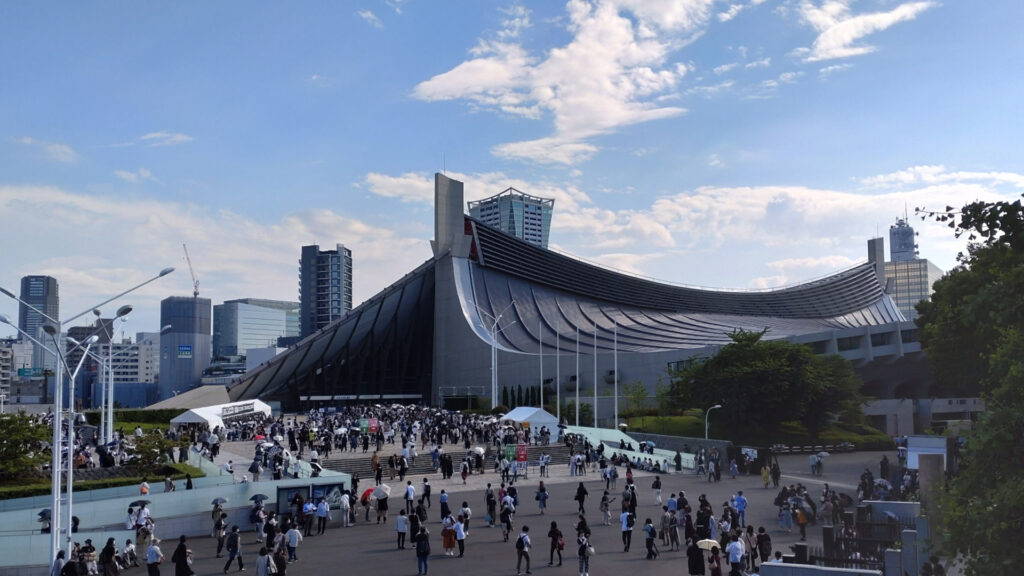
Hours of Operation, Admission Fees
Meiji Jingu Shrine is a popular tourist destination that can be visited throughout the year. Below is detailed information about the opening hours and admission fees of Meiji Jingu Shrine.
Hours of Operation
The precincts of Meiji Shrine are open to the public every day, but the opening and closing hours vary depending on the season.
- January, November, December: 6:00 a.m. to 4:00 p.m.
- February, March, October: 6:00 a.m. to 4:30 p.m.
- April and September: 6:00 a.m. to 5:00 p.m.
- May, June, July, August: 6:00 a.m. to 5:30 p.m.
Facilities such as the Treasure Hall and the Gyoen may have different hours of operation, so visitors are advised to check the official website for the latest information before visiting.
Admission Fees
Admission to the grounds of Meiji Shrine is free. However, the following specific areas require an admission fee.
- Meijingu Gyoen: Adults 500 yen, Elementary school students and older 200 yen
- Treasure House: Admission is charged only when special exhibitions are held. Fees vary depending on the content of the exhibition, so please check the official website in advance.
Other Information
- Guided Tours: Meiji Jingu Shrine offers guided tours in multiple languages, including English. Reservations may be required, so please check the official website for details.
- Prayers and Weddings: Special ceremonies such as prayers and weddings are also offered and require advance reservations. Interested parties should inquire through the official website.
Summary
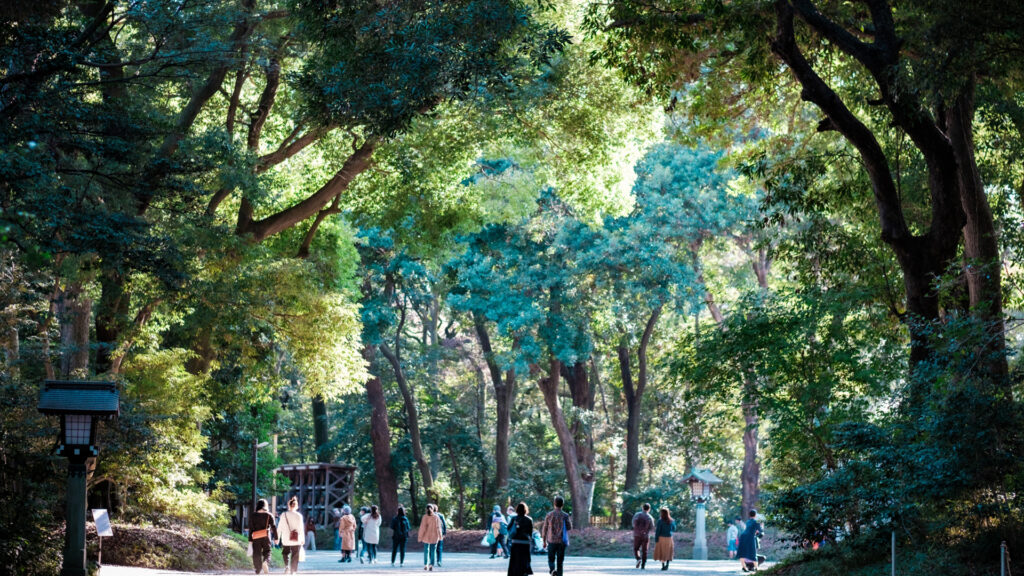
Meiji Jingu is a beautiful shrine located in the center of Tokyo that attracts visitors with its history, culture, and natural beauty. founded in 1920, it was built to worship Emperor Meiji and Empress Dowager Shoken. The shrine is known for its seasonal scenery, especially beautiful cherry blossoms in spring and autumn leaves in fall. The vast shrine grounds offer visitors a variety of experiences, including the majestic Main Shrine, the huge Torii gate, the Treasure House, and the beautiful Gyoen Garden.
Meiji Jingu is easily accessible from Tokyo Station, Narita Airport, and Haneda Airport. It takes about 25 minutes from Tokyo Station by JR Yamanote Line, about 90 minutes from Narita Airport by Narita Express, and about 60 minutes from Haneda Airport by Tokyo Monorail and JR Yamanote Line.
Admission to the precincts of the temple is free, but there is an admission fee to the Gyoen and the Treasure House when special exhibitions are held. Hours of operation vary with the season and are open from early morning to late afternoon. It is recommended to check the official website for the latest information before visiting.
Please enjoy the attractions of Meiji Shrine to the fullest while observing the following precautions during your visit: good manners when visiting the shrine, measures to take in case of crowds, and wearing shoes that are comfortable for walking. Participating in guided tours and special ceremonies will also make your visit at Meiji Shrine even more special.

